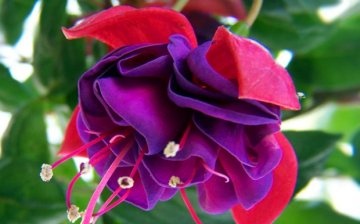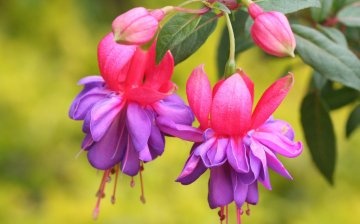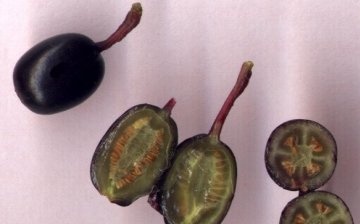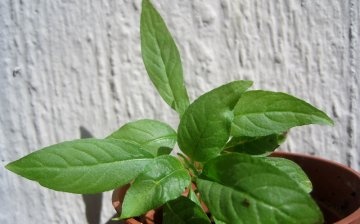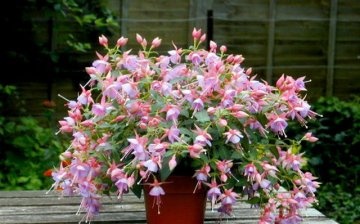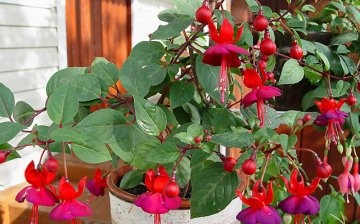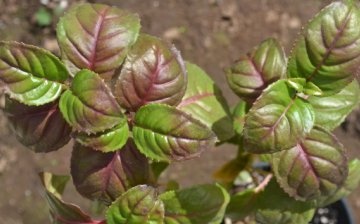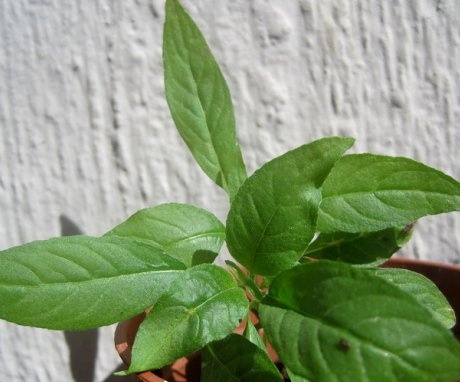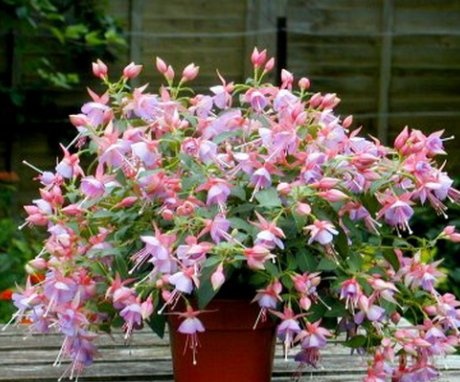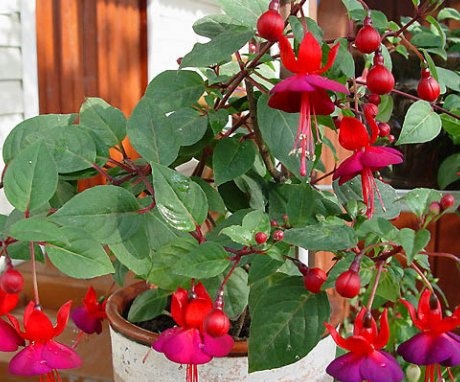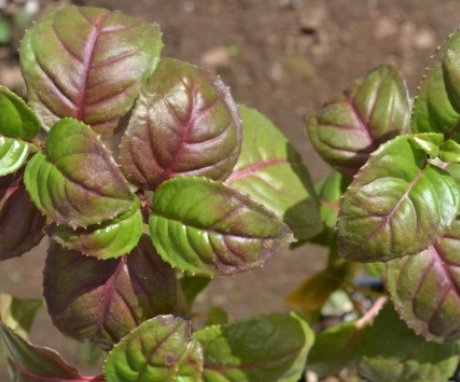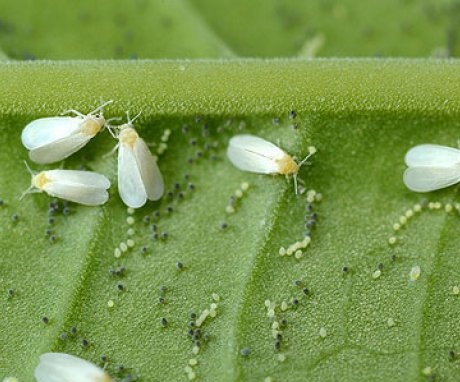Recommendations for flower growers - how to properly grow fuchsia from seeds
An evergreen shrub from the fireweed family, fuchsia, was first discovered on the island of Hispaniola by the French botanist Charles Plumier. This beautiful plant grows in Central and South America, New Zealand and even Tahiti.
Due to the huge variety of plant flowers, there are a huge variety of fuchsia varieties. Florists love fuchsia for its beauty and ease of care. Even an amateur who has no experience in plant breeding can grow it.
Content:
- Perennial structure features
- Growing with seeds
- Seedling care
- Growing conditions
- Fuchsia transplant
- Fight disease
- Pest control
Perennial structure features
Fuchsia belongs to evergreen perennial shrubs... The flowers of the plant are bisexual, growing on long pedicels. In some fuchsia species, the sepals are larger in size than the petals themselves and repeat the shape of the corollas, in other species the petals are wide, large, bright, and the sepals are spread out to the sides.
The stamens and pistil are clearly visible. The leaves are green, with long petioles and strongly depressed veins, they are oval or ovoid with jagged edges.
Period flowering falls in spring and summer, and the plant produces a lot of flowers.
At the end of the flowering period, fruits are formed - berries. At home, fuchsia usually grows no more than 80 centimeters in height.
Growing with seeds
If you already have fuchsia growing, you can try to get the seeds independently, although it is quite troublesome, but, nevertheless, a fascinating process.
To get fuchsia seeds ourselves, you need to pollinate the flower. For this you need:
- Have maternal and paternal plants. In unblown or just starting to bloom, the buds of the mother plant are carefully removed with tweezers, the pollen is removed from the parent plant with a cotton swab or brush and applied to the pistil of the mother plant. This method of obtaining seeds is not the most convenient, since in this case there is no guarantee that all the properties of the parent variety will be preserved.
- If you have only one fuchsia growing, you can do pollination on one plant: carefully transfer the pollen from the stamens of one flower to the pistil of another. In this case, the properties of the variety are preserved.
- After that, the pollinated bud must be covered with a thin cloth, gauze or paper, under which the berry fruit will grow. This must be done to avoid insect pollination.
- When the fetus appears, the tissue is removed. First, the berry turns red, then purple, and finally, the ripe fruit turns purple.
- The fruits are best harvested in sunny weather. Seeds carefully removed and dried so that they do not become moldy. They are laid out in bags and stored in a cool place (you can in the refrigerator) until spring.
If you do not have the time and desire to mess around with obtaining seeds, you can purchase seeds in a specialized store. Fuchsia seeds can be sown in February, March or April.
Purchase a special primer in the store or make it yourself from the mixture:
- Sod land - 3 parts
- Peat - 2 parts
- Sand - 1 part.
Place the soil in a small box or tray, moisten before sowing, spray with a weak solution of potassium permanganate and compact. Sow the seeds on the surface, without covering them with earth, but only slightly pressing them into it. This is an important condition, because without the access of light, the seeds will not sprout. If sprinkled, then only purely symbolic.
Since the fuchsia seeds are very small, you can mix them with sand to make sowing easier.
Make an impromptu greenhouse, covering the seed box with plastic or glass, and place in a warm, bright place out of direct sunlight. The optimum temperature for germination is 18 to 20 degrees. If condensation collects on the film, open the greenhouse for ventilation. Make sure that there is no excessive moisture in the soil. When the soil dries up spray it with water at room temperature.
Seedling care
You can put a box with seedlings into the pallet and pour through the pallet. The sprouts appear in about 20-30 days. After the emergence of seedlings, the greenhouse must be ventilated more often, starting from 15 minutes a day, gradually increasing the time the seedlings are in the fresh air.
After the appearance of the second pair of true leaves, the sprouts are transplanted into separate containers.
Use a pencil to make shallow holes in the soil, dig out the seedlings and carefully lower them into the holes. Press down firmly around each plant. For better adaptation of the sprouts, cover them with plastic or paper for one or two days.
Water the plant along the edge of the container or through the drip tray as the soil dries. Feed once every 14 days seedlings complex mineral fertilizer and make sure the plants have enough ambient light. When the sprouts are 10 cm tall, pinch the tops.
Growing conditions
All fuchsias love a lot of light and fresh air. Therefore, from spring, place the pots with plants in bright rooms, remembering to protect from direct sunlight, as the flower can get burned and shed the leaves.
There is a rule: the darker and brighter the color of the flowers, the more sun the plant needs.
That is, if the flowers are of a delicate color, it is better to keep fuchsia in partial shade. Do not rearrange plants during flowering - flowers that make up the main beauty may fall fuchsia.
Watering plants:
- Do not let the soil dry out, but you only need to water when the ground is 2 centimeters deep.
- If watered excessively or, conversely, not enough, the flowers will fall off.
- Fuchsia loves moisture, so more often spray plant (during the growing season, twice a day - in the morning and in the evening).
- Water for irrigation must be defended at room temperature for 24 hours.
Fuchsia does not tolerate too hot a climate, so the air temperature in the room with the plant does not exceed 22 degrees. Fuchsia can even die from excess heat.
In late autumn, fuchsia partially gets rid of the leaves, and in winter it is important to give the flower rest. It is advisable to place the pot with the plant in a cool, dark place with an air temperature of 4 to 10 degrees Celsius. If the fuchsia has dropped all the leaves, place it in complete darkness. Watering limit.
Transfer
Transplant fuchsia is best in spring in slightly acidic soil. For transplantation, you can take soil consisting of:
- Sod land - two parts
- Peat land - one piece
- Pine bark - 0.5 parts
- Sand - 0.5 parts.
You can do it easier and purchase a special primer for fuchsia in the store, and universal for flowering plants is also suitable. Containers for transplants should not be very large so that the flower is not too loose, and not too small so as not to restrict growth. Be sure to place drainage at the bottom of the pot; expanded clay is suitable for this purpose. Fill it with a layer of 4-5 centimeters and fill the soil on top.
Before transplanting, you need to prune: cut off the shoots by at least a third.
After transplant fuchsia water and spray abundantly. New shoots should form soon and the plant will bloom. If a white or yellow bloom forms on the surface of the soil, it must be removed and the soil filled up.
Fight disease
With proper care, fuchsia is generally not susceptible to disease. Flower diseases and prevention:
- If fuchsia leaves turned yellow, this can be a sign of over-watering or a lack of nitrogen and magnesium. Dry brown spots on the leaves indicate a lack of molybdenum, and yellow spots between the leaf veins indicate a lack of manganese. Depending on the reason, either reduce watering, or spray the flower with a solution of magnesium sulfate, apply a complex mineral fertilizer.
- With sunburns, spots appear on the leaves. To get rid of them, it is enough to rearrange the plant to another place.
- By the roots, you can also determine the presence of a disease in a flower: white, short roots are a sign of a healthy plant. If the roots are closely intertwined with an earthen ball, transplant the flower into a larger container.
- The roots of a dark brown color indicate a disease with brown rot; neither a reduction in watering, nor a transplant will be able to save the plant.
- Rust is a serious disease affecting the plant - its symptom is brown lines in the form of circles on the underside of the leaves. All diseased leaves must be removed and the fuchsia and the ground should be sprayed with an anti-rust preparation. Rust spores are easily carried by insects and wind, so at the first sign diseases isolate the flower. If you touch the affected plant with your hands, be sure to wash them thoroughly so as not to infect other flowers.
Pest control
The most dangerous and common pestsfuchsia:
- Most often, fuchsia is affected by small white flies - whiteflies, as a result, leaves turn yellow, flowers shrink and shoots die. In addition, the whitefly is also a disease vector. Treat the soil around the plant with a solution drug "Aktara" in a proportion of 4 grams per 5 liters of water. This must be done four times, since after a single use of the drug, a generation of whiteflies that is resistant to insecticides can form. You can apply a soapy solution to the leaves for one hour, and then thoroughly rinse it off along with the larvae.
- Another pest found on fuchsia leaves is the red spider mite. If the leaves began to become covered with pale dots, immediately carry out the processing drugs Fitoferm, Confidor, Agravertin. Remove infected leaves. To avoid spider mite infestation of fuchsia, spray more frequently in hot, dry weather.
- If a flower is damaged by aphids or weevils, you can use drugs that are non-toxic to humans - "Aktelik" or "Gaupsin".
More information can be found in the video.



